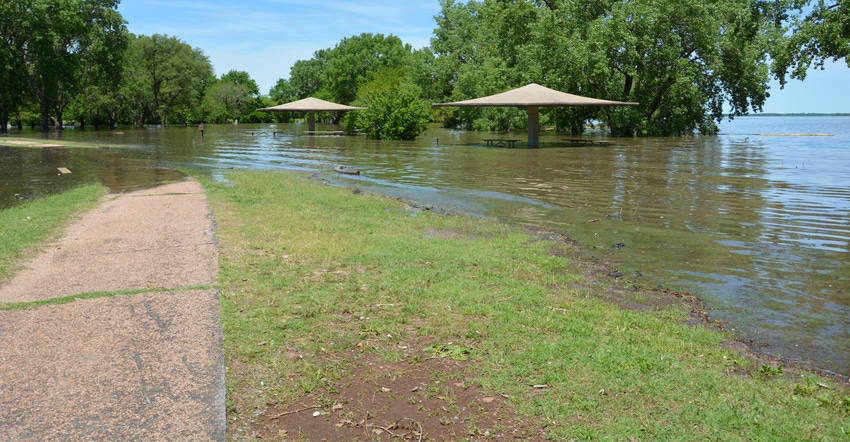
Almost half the counties in Kansas — 47 or 105 — are included in Gov. Laura Kelly’s newest disaster declaration. The governor is also asking for federal funding to help devastated farms, ranches and towns recover from the floods that are inundating Kansas.
This is one more blow to an already struggling farm economy, and it comes at a time when it isn’t just Kansas being hit by Mother Nature but the entire Midwest. It also comes at a time when Congress is being downright quirky about providing disaster to areas hit by tornadoes and flooding last year and the year before.
To me, that says that Kansans better be content to find themselves at the back of the line as the nation struggles to figure out how to help the victims of ever-more-violent weather all over the country.
South-central Kansas is not really accustomed to the kind of flooding it has seen in May. The northeast has grown used to regular flooding along the Missouri River. The southeast part of the state is used to floods on the Verdigris and Neosho rivers.
Minor flooding on the Arkansas River in central Kansas comes with some regularity but record-breaking floods are rare. As of May 27, the Ark was threatening to do just that at Arkansas City — hit a record flood stage that would send water pouring into downtown.
In Coffeyville, the crest on the Verdigris came within about a half-foot of spilling into town. But with more rain in the forecast, nobody is feeling sure that the worst is, in fact, over. The damage to the agricultural economy hasn’t even started to be measured. The tab just keeps growing, including prevented planting of corn, destroyed wheat, fields that may not be accessible in time a 2019 crop and losses of stored grain.
Coming into a sixth-straight year of low commodity prices, further exacerbated by a trade war that keeps getting worse, most farmers are in the worst possible position to rebuild. Rural communities are not in much better shape.
Paying for repairing the damage is going to be challenging, even if everybody in the power structure gets on the same side to push for help getting this mess cleaned up and people back in business. Unfortunately, they aren’t. Twice now, two Congressmen, one at a time, have decided to play spoiler, stopping an aid package that would help storm victims from Puerto Rico to Montana.
At our spring meeting in Washington, D.C., the North American Ag Journalists had meetings with Congressional leaders who acknowledged that passing disaster funding packages is daunting because new disasters keep occurring while debate on paying for the last one is still ongoing.
Do we keep going back to the drawing board, making an existing program bigger? Or do we pass a separate appropriation for each disaster, one at a time? The problem is when you consider that the current Congress can’t seem to deal with a disaster from two years ago, how long will it be before we see them acknowledge the current mess?
I’m watching my social media fill up with posts from friends in Missouri, Arkansas, Oklahoma, Texas and Louisiana as massive flooding hits those areas, too. What about funding to help those folks recover? Governors and senators are asking, and disaster declarations are being made, but how are we going to pay for this and what is still to come?
Moreover, how are we going to pay for replacing the damaged public infrastructure — the roads, bridges, locks and dams, levees, and even more important, what can we do to harden that infrastructure so that it is more resilient against bigger and bigger rain events? It astonishes me that elected officials can even suggest that we just ignore the problems.
It’s a conversation that demands national attention. There is no room for silly rhetoric and one-upping going forward. We need all hands on deck to deal with the real national emergency we are facing. It’s time to stop bickering and start problem-solving. It’s time to ignore all the noise and focus on the job. It’s a big one, and we need to get started.
About the Author(s)
You May Also Like






